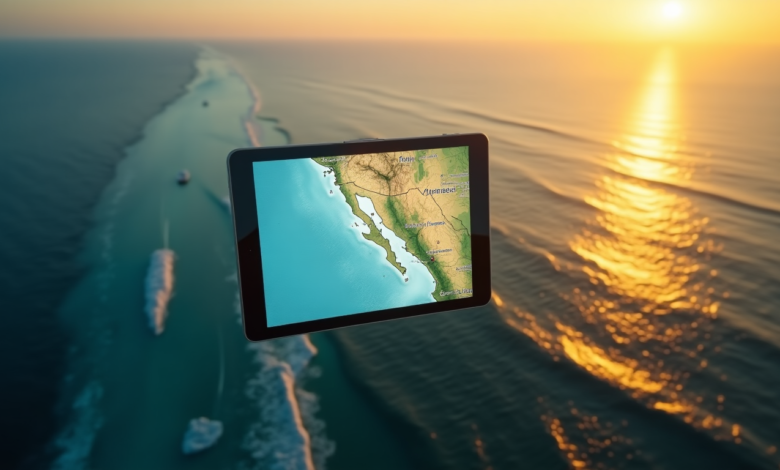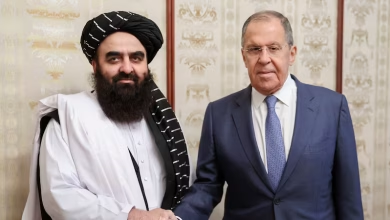
Is Google Maps Really Renaming the Gulf of Mexico? Here’s What We Know
Google Maps serves over a billion monthly users worldwide. The platform now faces a heated geographical naming controversy after President Donald Trump’s executive order to rename the Gulf of Mexico as “Gulf of America” for U.S. users.
The change will impact how millions of Americans view the 218,000-square-mile oceanic basin. Users in Mexico and other countries will see different versions of the name. American users will encounter “Gulf of America” on their screens, while Mexican users will keep seeing “Gulf of Mexico” – a name European explorers and mapmakers have used for more than 400 years.
Let’s get into this controversial renaming decision in this piece. We’ll look at what it means for digital mapping and how it connects to broader discussions about geographical naming conventions today.
Understanding Google Maps’ Regional Naming System
Google Maps’ naming system uses a smart way to handle geographical disputes and regional priorities. The platform shows different location names based on the user’s location. This creates a system that respects local customs and sensitivities.
The regional naming policy shows up clearly in areas with competing geographical names. So, Japanese users see the water body between Japan and South Korea as “Sea of Japan,” while South Korean users see “East Sea.” Users in other countries see “Sea of Japan (East Sea)”. The waters between Iran and the Arabian Peninsula tell a similar story – Iranian users see “Persian Gulf,” Arab nations’ users see “Arabian Gulf,” and the rest of the world sees “Persian Gulf (Arabian Gulf)”.
Local points of view matter beyond just water bodies. Indian users see Kashmir fully within India’s borders with a solid black line. Users outside India see it as a disputed territory that shows areas under Pakistan’s and China’s control.
A team of software engineers, product managers, GIS specialists, policy analysts, and geopolitical researchers reviews each complex case. The company makes these decisions after talking to local governments and official bodies to follow local laws and regulations.
The Gulf of Mexico Renaming Timeline
President Trump signed an executive order January 20, 2025 to rename the Gulf of Mexico to Gulf of America. The order directed the Department of Interior to complete this change within 30 days.
The Interior Department made the name change official for federal use January 24. This prompted the U.S. Board on Geographic Names to begin updating its Geographic Names Information System (GNIS).
Google addressed this development through its social-first channels January 27. The company explained it would wait for official GNIS updates before implementing any changes. The tech giant’s plan would show “Gulf of America” to U.S. users while Mexican users would see “Gulf of Mexico.” Users in other countries would see both names displayed.
Mexico’s government took a strong stance January 30. President Claudia Sheinbaum questioned the renaming’s legitimacy based on the United Nations Convention on the Law of the Sea. The convention restricts a country’s sovereign territory to 12 nautical miles from its coastline. Mexican officials insisted any name changes should apply only within these limits.
The Associated Press decided to maintain “Gulf of Mexico” in its coverage while noting the “Gulf of America” alternative. This choice highlights the complexities of geographical naming conventions and their global implications.
Impact on Digital Maps and Navigation
The change in geographical names creates major challenges for digital mapping platforms and navigation systems. National Geographic, a leading map maker, stays politically neutral and bases its decisions on thorough research rather than single mandates. The company also adds notes to explain disputed place names and provides context where multiple names exist.
Getting navigation right is the biggest concern. The U.S. Board on Geographic Names has a database with more than one million place names that federal agencies use as their go-to source. This system will give a consistent approach to government documents and official maps.
The International Hydrographic Organization, with members from both the United States and Mexico, works to keep surveying and charting standards the same worldwide. The organization wants to replace traditional place names with number codes to make modern geographic systems better.
Here’s how different platforms handle the name change:
- Google Maps: Shows “Gulf of America” to U.S. users, “Gulf of Mexico” to Mexican users, and both names to users elsewhere
- Apple Maps: Continues displaying the traditional name while reviewing the change
- National Geographic: Maintains its independent review process, consulting multiple authoritative sources
Navigation needs consistent naming to work well. The federal government’s Geographic Names Information System serves as the main reference for all federal agencies and keeps official communications uniform. This standard applies to U.S. government documents, maps, and official letters, though international bodies can choose whether to follow it.
Geographic naming conventions face competing demands between political mandates and technical implementation. President Trump’s executive order brings a major change to how U.S. users will see the Gulf of Mexico. The actual implementation has become more complex than just changing a name.
Digital mapping platforms must balance local sensitivities with international standards. Google Maps shows this delicate balance through its regional approach that lets different users see names matching their local point of view. Navigation systems and other mapping services now face a choice to adopt these changes or stick to traditional naming conventions.
This situation resembles past geographic naming disputes, like the Sea of Japan controversy, where multiple valid viewpoints exist. In spite of that, standardization remains crucial to ensure accurate navigation and international communication. Federal agencies will maintain consistency through the Geographic Names Information System. Debates continue about the change’s legitimacy under international maritime law.
This case will without doubt influence future geographic naming decisions in the digital world. Clear protocols for name changes become more crucial as mapping technologies advance. This need grows stronger each time political decisions overlap with established geographic conventions.






